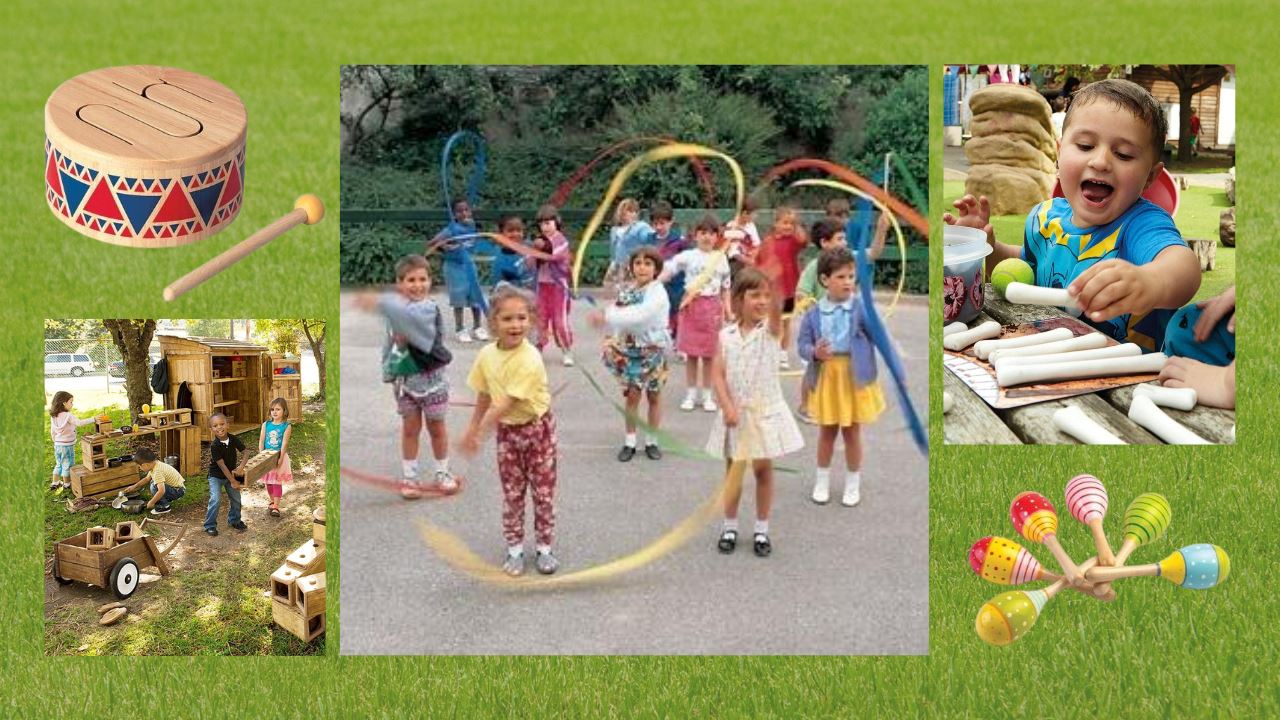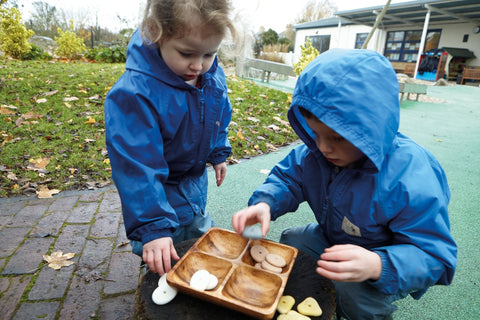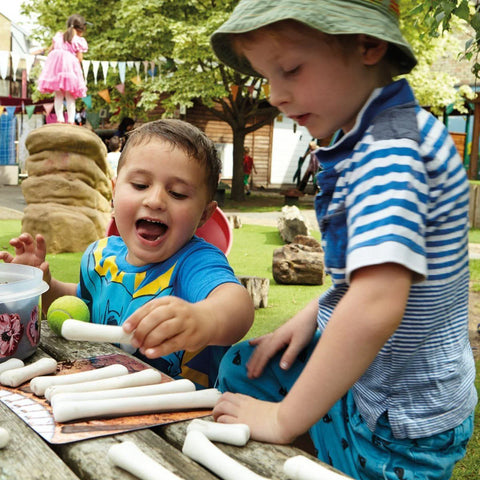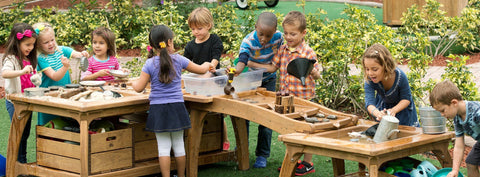For toddlers and preschoolers, incorporating music into outdoor play can enhance sensory development, creativity, and motor skills. While many educators across Canada are now mandated to take structured curricular learning outdoors.
Here are five music-based activities for a childcare center’s toddlers and preschoolers to enjoy in the great outdoors.
Start with an experiential introduction
Many musical instruments were probably inspired by sound making in nature. Consider closely examining musical instruments to make the connections between their materials and their natural sources:
-
Wood in violins, clarinets, guitars etc.
- Beans, sand, pebbles and seeds in rattles, rain-sticks or maracas
-
Sticks, bones, for drumsticks
-
Skins on drums
-
Animal hair on bows
-
Wool felt on drum sticks to soften sounds
-
Bamboo, wood, roots for kalimba keys
-
Pieces of wood, bamboo, bone, logs, roots or stones for percussion instruments
The inside of a piano, combines many of the above elements:
-
Wooden hammers
-
Felt pads that make contact with the strings
-
The piano body that resonates
-
Sound Hunt:
Search a designated outdoor area for items that could be used to make musical instruments reflecting the instrument making material, above. Depending on your outdoor area, consider seeding your space with examples such as dinosaur bones, wood planks and other loose parts.
-
Instrument Making:
Get creative with a DIY instrument-making activity that combines arts and crafts with music exploration.
Set up a crafting station outdoors with various materials such as empty containers, rubber bands, rice or beans, and colorful decorations. Guide the children through the process of assembling their own homemade instruments, such as shakers, drums, or banjo/guitar type string instruments. Once the instruments are complete, gather the group for a jam session where they can experiment with the sounds produced by their creations.
-
Sensory Sound Garden:
Create a sensory sound garden where children can explore a variety of auditory experiences while surrounded by nature. Set up stations with the instruments and sound makers you created throughout your outdoor space. Supplement with different sound-producing objects such as wind chimes.
Encourage the children to listen closely to the sounds and how they change in the environment:
-
Are the objects are dry or damp?
-
Is it a windy or still day?
-
Do the ambient sounds in the environment change depending on the season or the time of day? Such as birdsong, insects or even the human generated sounds of traffic, construction or people.
Children can reflect and record their interactions and observations. In words, pictures, sculptures etc. This activity not only fosters an appreciation for music but also cultivates an awareness of their environment and the changes of time and seasons.
-
Dance and Jam alongs:
With portable speakers, and cleared area, children can play along to music or express themselves with dances. Share music from around the world has been created that is a response to the natural world: storms, flowers, mountains, birdsong etc.
Encourage the children to respond to the music with simple dance games like musical statues, freeze dance, or with the simple rhythm instruments you can find in kits such as:

-
Musical Obstacle Course:
Transform traditional outdoor play equipment into a musical obstacle course that challenges both motor skills and auditory perception. Incorporate musical elements into each station of the course, such as stepping stones that produce different sounds when tapped or or tunnels -- such as the Outlast, Super Sensory or See Through Fun tunnels -- adorned with hanging chimes. . As the children navigate through the course, they'll not only refine their physical abilities but also engage their senses as they interact with the musical features.











1 commentaire
Sandra Arevalo
very educational.